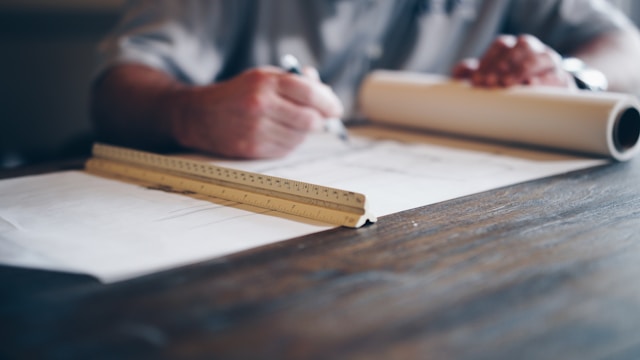Several US government programs aim to attract top foreign professionals to work in specialty fields nationwide, fostering a vibrant ecosystem for innovation. These experts often possess theoretical and practical knowledge in specialized fields like medicine, healthcare, the sciences, business, and more. Many of these programs attract global talent, but America offers a specific non-immigrant visa targeting only uniquely skilled Australian nationals. It is known as the E-3 visa.
Remitly caters to professionals in diverse sectors globally, including Australia, and some seek greener pastures abroad. If you’re an Australian looking for US employment opportunities, a US-based employer ready to hire skilled Australian talent, or an agent helping others navigate approval, we’ve prepared this guide to explore the E-3 visa application process. Here, we’ll discuss eligibility criteria, required documents, and application steps in depth.
What is the E-3 visa?
The E-3 visa is a special non-immigrant US visa for Australian professionals in specialty occupations.
What is a “specialty occupation”?
Although this is a broad term, most experts agree that a “specialty occupation” is one that requires a bachelor’s degree or higher as a minimum barrier to entry. You must also have highly advanced knowledge, practical skills, and the ability to handle complex tasks to work in that area of expertise.
Immigration officials don’t check applicants against a specific list of occupations. But generally, some of the job profiles that can qualify under this Australian work visa for the US include:
- Software engineers
- Data analysts
- Research scientists
- Doctors
- Accountants
- Architects
- Management consultants
What is the validity period?
The E-3 visa allows Australians with specialized skills to legally work in the US for a maximum of two years.
However, this period can be extended indefinitely in two-year chunks, provided you meet all the visa conditions and maintain employment in a specialty occupation.
Does the E-3 visa cover dependents?
Successful E-3 visa applicants can come to the US with a spouse and unmarried children under the age of 21; however, these dependents must apply for an E-3D visa.
The children’s visa expires once they turn 21, so they must apply for a change of status to continue legally residing in the US.
Annual E-3 visa limits
Officials have placed an annual cap on this entry authorization, meaning only 10,500 E-3 visas can be issued every financial year. However, this quota has never been met, making E-3 visas readily available for anyone who wants to apply.
The annual limit also doesn’t apply to renewals, re-issuances, or visas for dependents.
E-3 visa eligibility requirements
As a US specialty occupations visa for Australians, not every applicant will qualify for this entry permit. Here’s a breakdown of the eligibility requirements:
Who qualifies for an E-3 visa?
This visa is only attainable by certain Australian professionals. To qualify, you must meet the following conditions:
- Be an Australian national.
- Have a bachelor’s degree or higher in your field. Equivalent education or experience will be evaluated if your degree isn’t from a US or Australian university.
- Receive a legitimate job offer in the US that requires practical and theoretical application of specialized knowledge.
- Obtain a Labor Condition of Application (LCA) from the US Department of Labor showing that your employment won’t negatively affect US workers. Your employer will apply for the LCA and share it with you during the application process.
Required documentation
Meeting these eligibility requirements isn’t enough. You must also provide documentation to support your application and prove that you qualify for the job. You’ll present and attach these documents when applying for the E-3 visa.
- Australian passport
- Employment offer letter from a US employer detailing the position, qualifications, duties, and salary
- Labor Condition Application (LCA) for Nonimmigrant Workers certified by the US Labor Department via Form ETA 9035. Information on job title, location, and salary is mandatory. Ensure that the details in this form are consistent with your job offer letter.
- Degree certificate and transcripts. Include a credential evaluation if the degree is from an institution outside the US or Australia
- Professional practicing license, if applicable
- Evidence that the job is a specialty occupation. To prove this:
- Provide a detailed job description highlighting the complexity, responsibility, and technical nature of the role
- Show proof of a degree requirement for the role
- Include a copy of your professional practicing license
- Employer support letter explaining why you were selected for the position and how your skills match the role
- Your resume and reference letters from past employers
E-3 visa application process
Applying for the E-3 visa is pretty straightforward. With the right documentation and information about the application process, you can avoid refusals or unnecessary delays.
Steps to apply for the E-3 visa
Wondering how to apply for the E-3 visa? Just follow this six-step process:
- Step 1: Obtain a certified Labor Condition Application (LCA) from the US Department of Labor. Your employer will make this application and share the LCA with you.
- Step 2: Gather the required supporting documentation, including your proof of Australian citizenship, degree certificate, practicing license, job offer letter, and more.
- Step 3: Begin the general US visa application process by completing form DS-160 on the online portal and printing the subsequent DS-160 confirmation page.
- Step 4: Pay the non-refundable nonimmigrant visa application fee of $315 USD at the time of writing.
- Step 5: Schedule and attend a visa interview at a US Embassy or Consulate in Australia. Remember to bring all the required documents.
- Step 6: Await visa approval. You can check the status of your application on the official website. Once you receive the visa, which will be a stamp in your passport, you can travel to the US.
Where to submit your application
Generally, you will submit your Form DS-160 via the online portal. However, you must submit an E Visa package—including your application form and supporting documents—to the nearest US Embassy or Consulate before scheduling a visa interview.
If you’re in Australia, you can submit your application to the US Embassy in Canberra or the US Consulate in Perth, Melbourne, or Sydney.
If you’re already in the States and need a change of status or renewal, submissions to the US Citizenship and Immigration Services (USCIS) office will suffice.
If you’re currently outside the US or Australia, you can also submit your application to select embassies, such as the UK or Canada.
How long before you get your E-3 visa?
The total processing time takes about four to eight months for applicants within the US. But if you need your visa faster, you can pay an extra fee for premium processing to reduce the required time to a maximum of two months. Check the USCIS Fee Schedule for the latest rates.
Applications at the consular level typically take between two and three months to process.
Common challenges and how to solve them
The E-3 visa application process may be simple, but applicants experience common challenges that could lead to delays and denials. We’ll explore a few, plus their potential solutions.
Challenge one: Employers struggle to meet LCA requirements
Your employer must meet LCA requirements, such as paying the market rate for the occupation in the geographic area where you’ll work. They should also post a notice of filing for the prescribed time, maintain detailed records, and handle US Labor Department audits.
Becoming familiar with the E-3 process will ensure all standards are met.
Challenge two: Rejected applications due to incomplete or incorrect documentation
Inaccurate information due to incomplete or incorrect documents can lead to delays, as consular officers will ask you for additional information or even administrative processing.
Ensure you double-check submission materials for accuracy. Also, consider professional help if you think it might help you prepare better.
Challenge three: Concerns about renewing or extending E-3 visa status
Follow the E-3 visa guidelines on renewal procedures for a smooth experience. File the necessary paperwork well before your visa’s expiration date to avoid complications.
Renewing the US visa for Australian professionals
Generally, the validity period for the E-3 visa is two years. You can renew the approval every two years after that for as long as you like, provided you continue to meet the visa and job requirements.
To renew your visa, file the necessary paperwork well before the visa’s expiration date. Include the previous E-3 approval notice or visa stamp in your application. You must also provide an updated LCA or recent pay stubs, as well as a letter from your employer confirming ongoing employment.
Benefits of the E-3 visa
This visa offers several unique benefits for recipients like you. Some of these include the following:
- It provides a legal pathway for Australians to work and live in the US temporarily.
- Compared to other work visas, there’s less competition because only skilled Australians are eligible for E-3 status.
- You can renew your visa indefinitely if you maintain your job and meet all other E-3 visa requirements.
- You can come to the US with your dependents. However, spouses and children under 21 must apply for E-3D visas.
- Spouses of E-3 Visa holders can work in any sector in the US without additional permits.
- The E-3 visa application process is shorter and less complex than other work visas.
- You will enjoy shorter wait times to receive E-3 approval compared to other visas.
Kickstart your career in the US today
Secure your US job opportunity and begin the E-3 visa application process today with ease. Once you understand the requirements, you can ensure your eligibility and comply with all the E-3 visa rules, simplifying renewal when the time comes. With this pathway, you can gain competitive credentials and progress your career in the US and beyond.
FAQs
Who is eligible to apply for the E-3 visa?
Australian professionals with specialized theoretical and practical knowledge in their areas of practice qualify to apply for the E-3 visa.
Can family members of E-3 visa holders work or study in the US?
Yes. Your spouse, a legally married partner, is authorized to work in the US. However, children cannot work under this visa. Your spouse and children can also enroll in full-time or part-time educational programs without needing a separate student visa.
How long does it take to get an E-3 visa approved?
The total processing time is about four to eight months if you apply with the USCIS. Premium processing reduces the wait time to a maximum of two months. Applications at the consular level typically take between two and three months to process.
What professions qualify for the E-3 visa?
The E-3 status is open to “specialty occupations” in various fields. Generally, specialty occupations are those that require a bachelor’s degree as a minimum barrier to entry.
How does an E-3 visa compare to an H-1B visa?
The E-3 and H-1B are both work visas for specialty occupations. However, the E-3 is for Australian nationals only, while the H-1B is open to all nationalities. The H-1B visa is highly competitive, with an annual cap of 85,000 visas, compared to 10,500 yearly E-3 approvals, which are rarely filled.
Spouses of principal E-3 visa holders may work in the US, while spouses of H-1B holders must qualify to work in the US. Lastly, the initial validity period of E-3 visas is two years, while it is three years for the H-1B visa.

